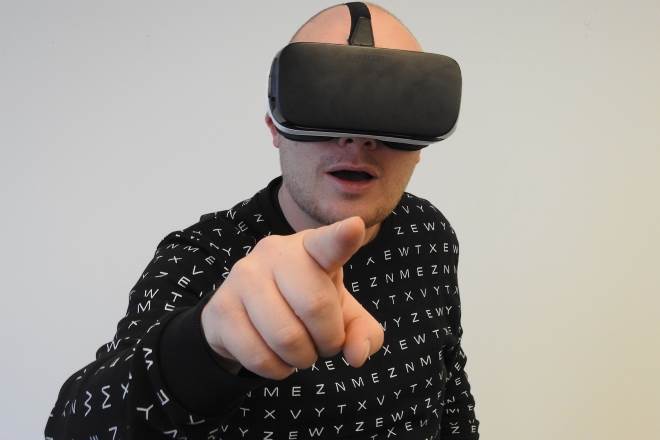Tactile Holograms: The Future of Touchable Digital Worlds
In a world where digital experiences increasingly dominate our lives, the line between virtual and physical reality continues to blur. Enter tactile holograms, a groundbreaking technology that promises to revolutionize how we interact with digital content. This innovative fusion of holographic displays and haptic feedback is poised to transform industries ranging from entertainment and education to healthcare and manufacturing. As we stand on the cusp of this technological breakthrough, let's delve into the fascinating world of tactile holograms and explore their potential to reshape our digital landscape.

How Tactile Holograms Work
At its core, tactile hologram technology relies on two key components: advanced holographic displays and precise haptic feedback systems. The holographic display creates three-dimensional images in mid-air using carefully controlled light patterns. Simultaneously, an array of ultrasound emitters generates focused sound waves that create the sensation of touch when a user interacts with the hologram.
Beyond Visual Illusions
Unlike traditional holograms, which are purely visual, tactile holograms engage multiple senses. Users can not only see the holographic objects but also feel their contours, textures, and even simulated weight. This multi-sensory experience creates a level of immersion that was previously unattainable in digital interfaces.
Applications Across Industries
The potential applications for tactile holograms span a wide range of fields. In medicine, surgeons could practice complex procedures on holographic patients, feeling the resistance of virtual tissue and bone. Educators could create interactive 3D models for students to explore, enhancing learning through hands-on experience. Product designers could prototype and refine designs in real-time, feeling the ergonomics of their creations before physical production.
Gaming and Entertainment Revolution
Perhaps one of the most exciting prospects for tactile holograms lies in the realm of gaming and entertainment. Imagine playing a virtual instrument and feeling the strings beneath your fingers, or reaching out to pet a holographic animal and sensing its fur. This technology has the potential to create entirely new forms of interactive storytelling and immersive experiences.
Challenges and Limitations
Despite its promise, tactile hologram technology faces several hurdles. Current systems are limited in the range and complexity of haptic feedback they can provide. The resolution of holographic displays also needs improvement to create more realistic and detailed images. Additionally, the cost and size of the equipment required for tactile holograms currently restrict their widespread adoption.
The Road Ahead
As research progresses, we can expect significant advancements in tactile hologram technology. Scientists are exploring new methods of haptic feedback, including the use of focused air jets and electrostatic fields to create more nuanced touch sensations. Improvements in holographic display technology, such as light field displays, promise to deliver higher-resolution and more vivid 3D images.
Ethical and Social Implications
The advent of tactile holograms raises important questions about the nature of digital interaction and its impact on society. As virtual experiences become increasingly lifelike, we must consider the potential psychological effects of blurring the line between physical and digital reality. Privacy concerns also emerge, as tactile holograms could potentially collect and transmit highly personal tactile data.
Market Potential and Industry Impact
While still in its early stages, the tactile hologram market shows promising growth potential. Industry analysts estimate that the global market for haptic technology, a key component of tactile holograms, could reach $4.8 billion by 2026. This growth is driven by increasing demand for immersive experiences in gaming, automotive interfaces, and medical training.
Touching the Future
Tactile holograms represent a significant leap forward in human-computer interaction. By engaging our sense of touch alongside our vision, this technology opens up new possibilities for how we create, learn, and play in digital spaces. As research continues and the technology matures, we can expect tactile holograms to become an integral part of our digital lives, literally allowing us to reach out and touch the future.





